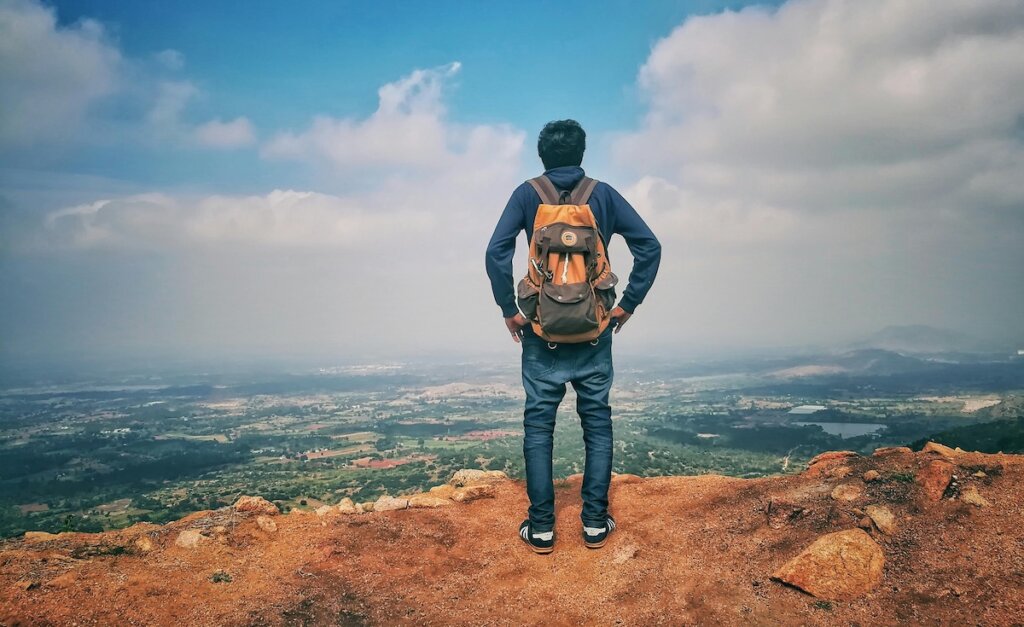Travelling India – A Backpacking Adventure Like No Other
India is a land of sensory overload, a kaleidoscope of colours, sounds, and emotions that will challenge and reward you in equal measure. For the solo traveler, it represents the ultimate test of resilience and an unparalleled opportunity for self-discovery. This article isn’t just a guide; it’s a roadmap to navigating India’s beautiful chaos, empowering you to travel with a backpack and an open heart.
Unlike Southeast Asia or Europe, backpacking India requires a different mindset. It’s not always easy, but the connections you’ll make and the stories you’ll collect will be worth every challenge. This guide will equip you with the knowledge to make your solo trip to India unforgettable.

Is India Safe for Solo Travelers?
This is often the first concern for anyone considering a solo trip to India, and it’s a valid one. The media often portrays a singular, negative narrative, but the reality is far more nuanced. While vigilance and common sense are crucial, India is, for the most part, a welcoming and safe destination.
Key Safety Tips for Backpackers in India:
- Trust Your Gut: Your intuition is your best guide. If a situation or a person feels off, politely excuse yourself.
- Dress Appropriately: Dressing modestly, particularly in smaller towns and religious sites, helps you blend in and avoid unwanted attention. Cover your knees and shoulders.
- Travel by Day: Whenever possible, choose daytime travel. If you must take an overnight bus or train, book your accommodation in advance and have a plan for arrival.
- Secure Your Belongings: Use a padlock on your backpack zippers, especially on trains and buses. Keep valuables in a money belt or a secure, hidden pocket.
- Stay Connected: Purchase a local SIM card upon arrival (e.g., from Jio or Airtel). Having data is a lifesaver for navigation and emergencies.
Is India Safe To Travel For Women?
India can be a safe and enriching destination for women travelers, but safety varies significantly across regions and cities. With proper precautions and awareness, many women travel solo or in groups and have positive experiences.
Some areas in India are considered safer for women travelers:
- South India: States like Kerala, Karnataka, and Tamil Nadu are often recommended for first-time solo female travelers due to their relatively lower crime rates and welcoming atmosphere.
- Other than South India, the entire Himalayas region in India is a also considered very safe.
- Indore: According to the National Annual Report & Index on Women’s Safety (NARI 2025), nearly 70% of women in Indore consider the city safe, placing it above the national average. However, safety perceptions differ between day and night.
- Kohima: Ranked first in the NARI 2025 report, Kohima is considered one of India’s safest cities for women.
- Kohima is located in Northeast Region in India. The entire Northeast India is also very safe. There are some ares in this region that follow a metrilineal society principals which is quite astonishing to see existing in India.
Some cities have reported higher incidents of harassment and safety concerns:
- Jaipur: Harassment of women in public spaces in Jaipur exceeds the national average, with 8% of women reporting incidents compared to 7% across 31 major cities. Unsafe areas include recreational spaces, neighborhoods, and public transport.
- Delhi: While Delhi offers rich cultural experiences, it has areas with higher crime rates. Solo female travelers are advised to exercise caution, especially at night.
Backpacking India on a Budget: How Much Does it Really Cost?
One of the greatest appeals of backpacking in India is its affordability. With smart planning, you can travel for as little as ₹1,500 to ₹2,500 per day (approximately $18-$30 USD).
Budget Breakdown (per day):
- Accommodation: Hostels in India are rapidly growing and offer excellent value. Expect to pay ₹400 – ₹800 ($5-$10 USD) for a bed in a clean, social hostel dorm.
- Food: This is where you save the most. A delicious street food meal or a plate of thali at a local dhaba (eatery) can cost as little as ₹50 – ₹200 ($0.60-$2.50 USD). Opting for local fare over Western restaurants will significantly lower your costs.
- Transportation: Trains are the most cost-effective way to travel long distances. A sleeper class ticket (non-AC) is incredibly cheap. Local buses and rickshaws are also budget-friendly.
- Activities: Many of India’s top attractions, like temples, palaces, and forts, have affordable entry fees. Hiking in the Himalayas or simply wandering through a vibrant market is often free.
Money-Saving Tips:
- Use the Train System: Book your tickets well in advance on the IRCTC website or through an agent, as seats fill up quickly.
- Embrace Street Food: Not only is it delicious and cheap, but it’s also a fantastic way to experience local culture.
- Stay in Hostels: They are not only cheap but also the best place to meet other backpackers to share costs and experiences with.
The Best Backpacking Routes in India for Solo Travelers
India is massive, and trying to see it all in one trip is a recipe for burnout. It’s better to choose a region and explore it deeply.
Recommended Itineraries:
- The Classic “Golden Triangle” (7-10 days): An ideal route for first-timers.
- Delhi: Explore Old and New Delhi’s historical sites and bustling markets.
- Agra: The home of the world-famous Taj Mahal.
- Jaipur: Discover the Pink City’s majestic forts and palaces.
- The Himalayan Circuit (10-21 days): Perfect for nature and adventure lovers, particularly for our Footloosecamps readers!
- Rishikesh: The “Yoga Capital of the World,” offering spiritual retreats and river rafting.
- Manali: A gateway to scenic treks and mountain adventures.
- Leh-Ladakh: An epic journey through high-altitude desert landscapes (seasonal: May-September).
- The Southern Serenity (10-14 days): For a more relaxed, tropical experience.
- Kerala: Explore the backwaters of Alleppey and the tea plantations of Munnar.
- Goa: Relax on the beaches, explore the Portuguese architecture, and enjoy the nightlife.
- Hampi: Wander among the surreal, ancient ruins scattered across a boulder-strewn landscape.
Cultural Etiquette & Communication: Navigating India’s Social Landscape
Understanding local customs is key to a smooth and respectful journey.
- Greetings: A simple “Namaste” (or “Namaskar”) with palms pressed together is a respectful way to greet people.
- The Head Wobble: This unique gesture can mean anything from “yes,” “no,” “maybe,” or “I understand.” You’ll learn to interpret it!
- Bargaining: It’s a common practice in markets and for rickshaw fares. Do it with a smile and good humour.
- Tipping: While not mandatory, it’s appreciated for good service, especially at restaurants and for guides.
- Photography: Always ask for permission before taking a photo of a person.
Essential Packing List for Backpacking in India
Beyond the basics, here’s what you shouldn’t forget:
- A Solid Backpack: Choose a comfortable, durable backpack (40-60L is ideal).
- Lightweight, Modest Clothing: Loose-fitting, breathable clothes are your best friends. A scarf is invaluable for covering your head at religious sites.
- Portable Power Bank: You’ll be on the go, and a charged phone is essential for navigation and communication.
- Water Purifier/Lifestraw: Save money and reduce plastic waste by purifying your own water.
- Hand Sanitizer & Toilet Paper: Not all public restrooms are equipped.
Conclusion: Your Adventure Awaits
Backpacking India as a solo traveler is a profound experience that will challenge your perceptions and fill you with incredible memories. Don’t let hesitation hold you back. Prepare with this guide, pack your curiosity, and get ready for a journey that will change your life. India is more than a destination; it’s an emotion. Go find your own.

